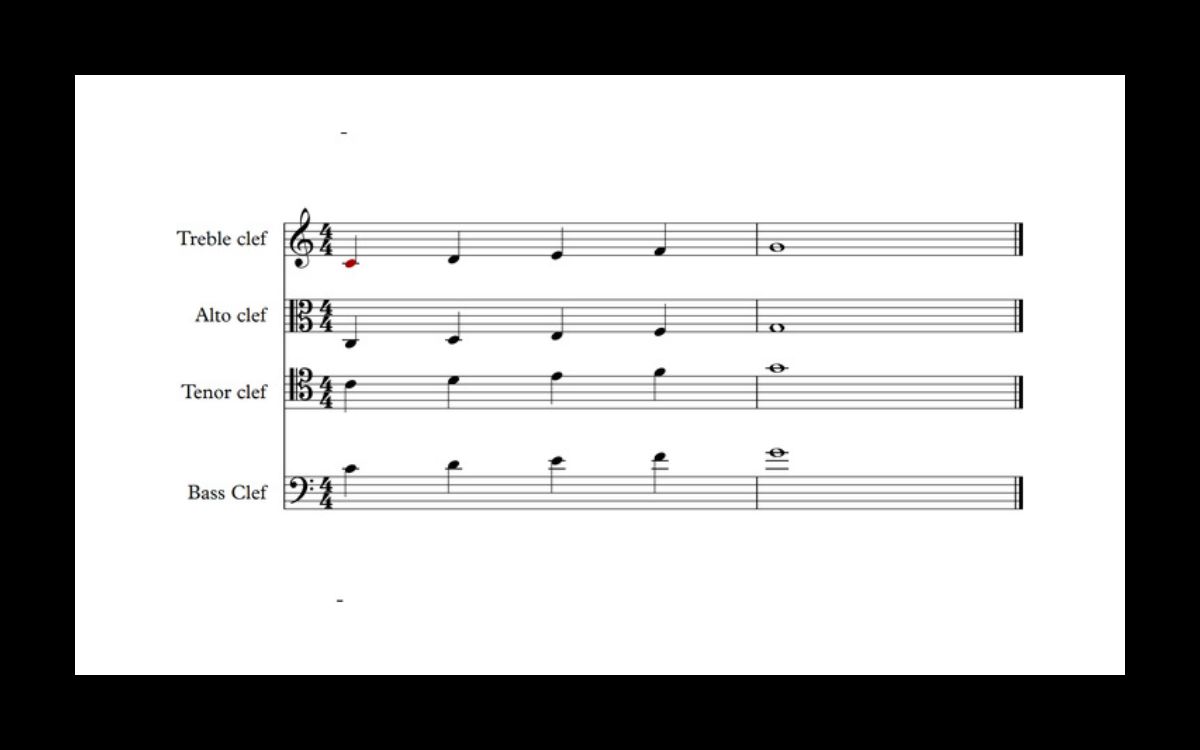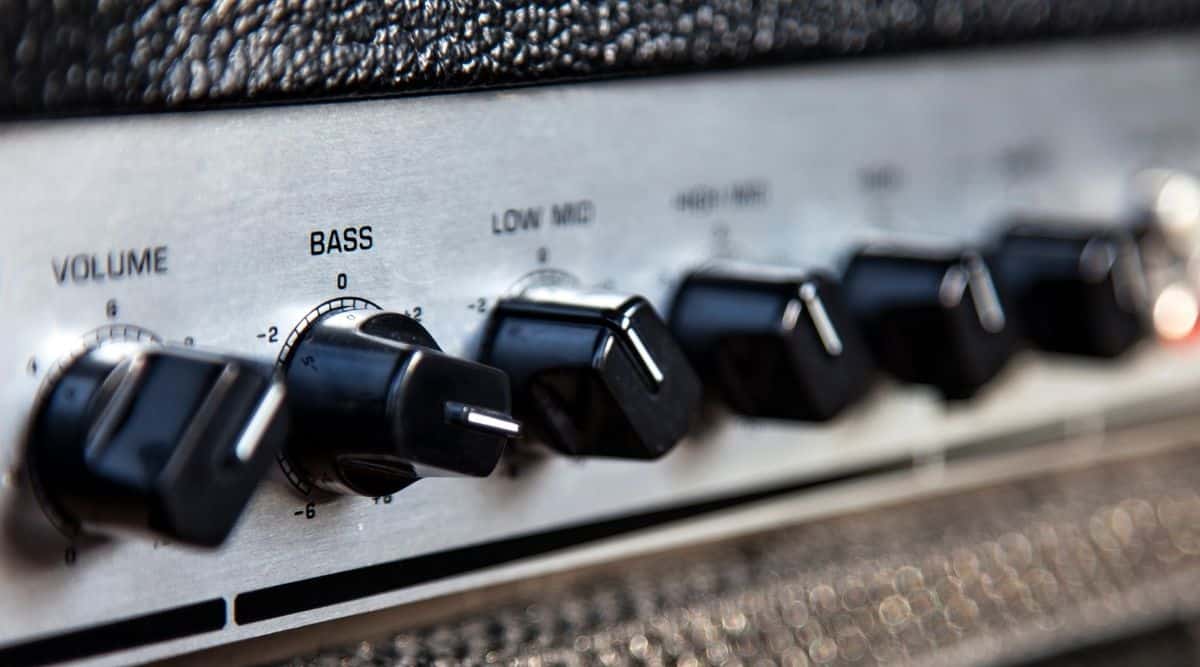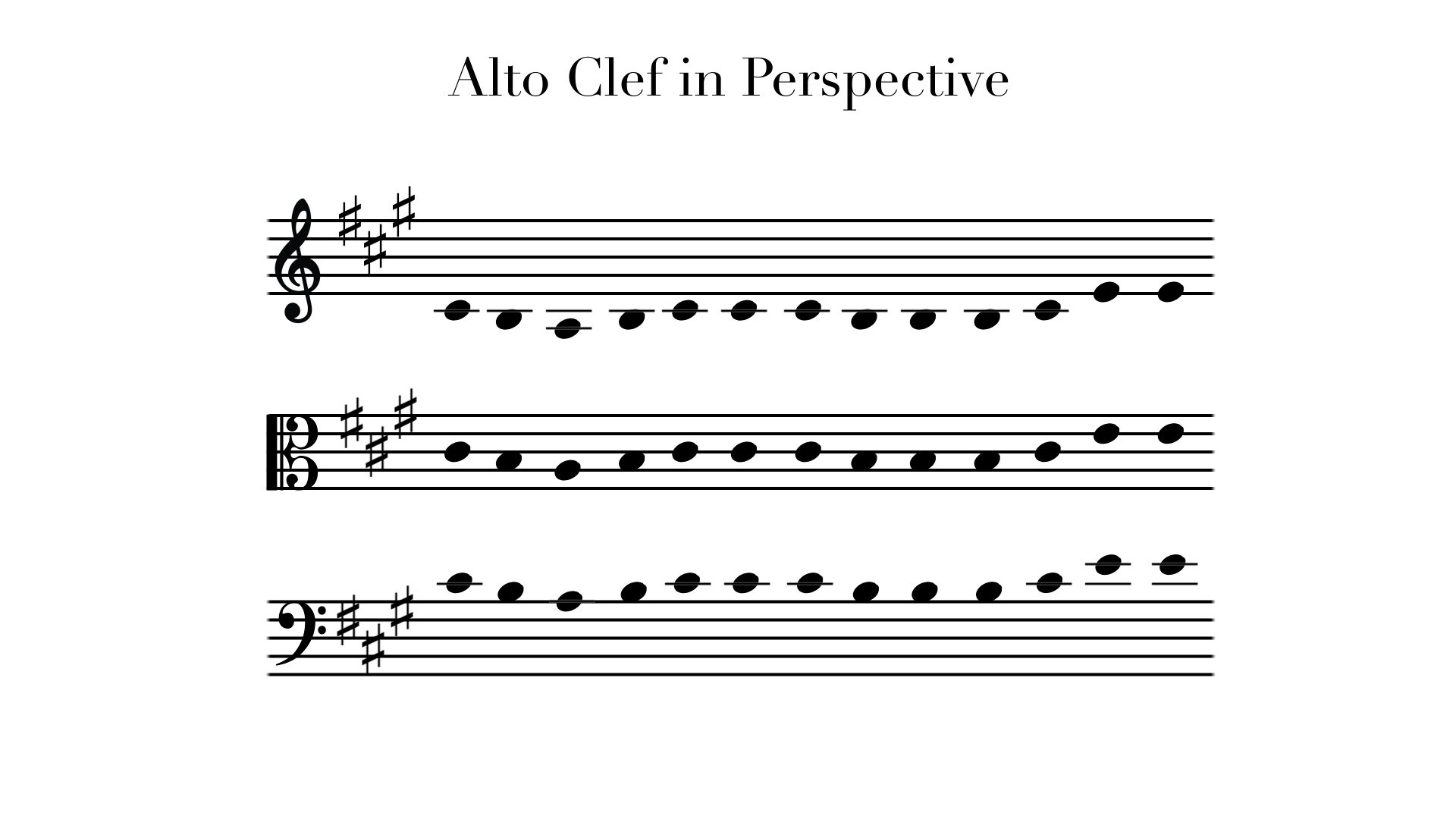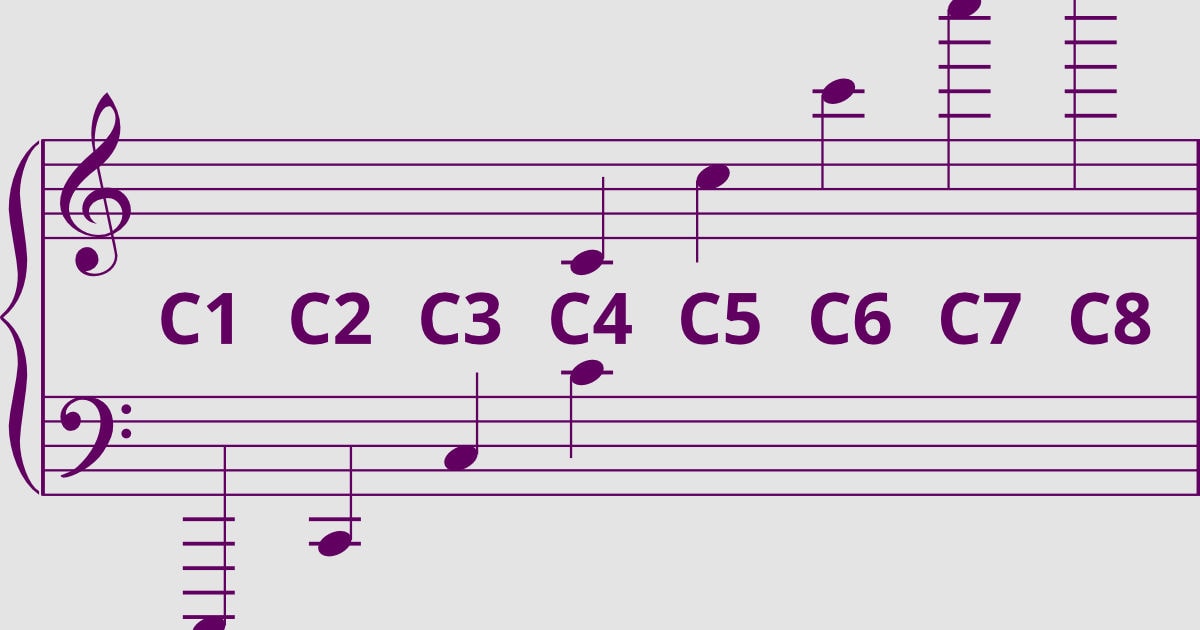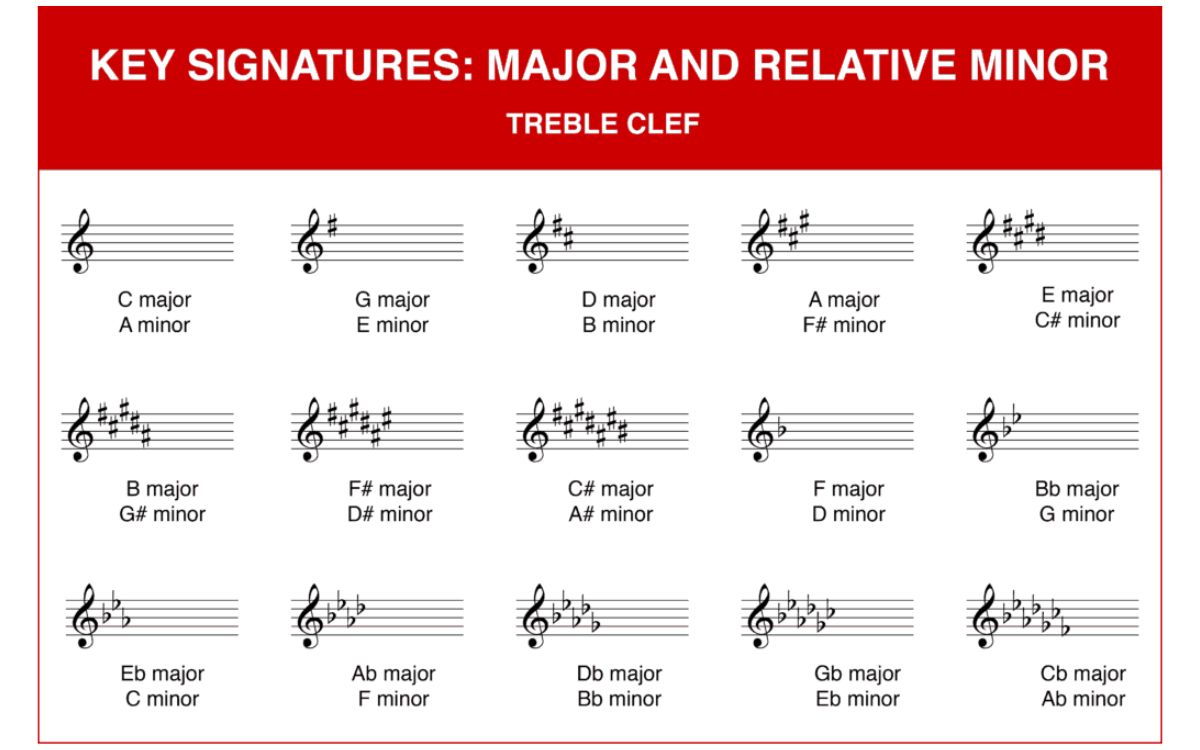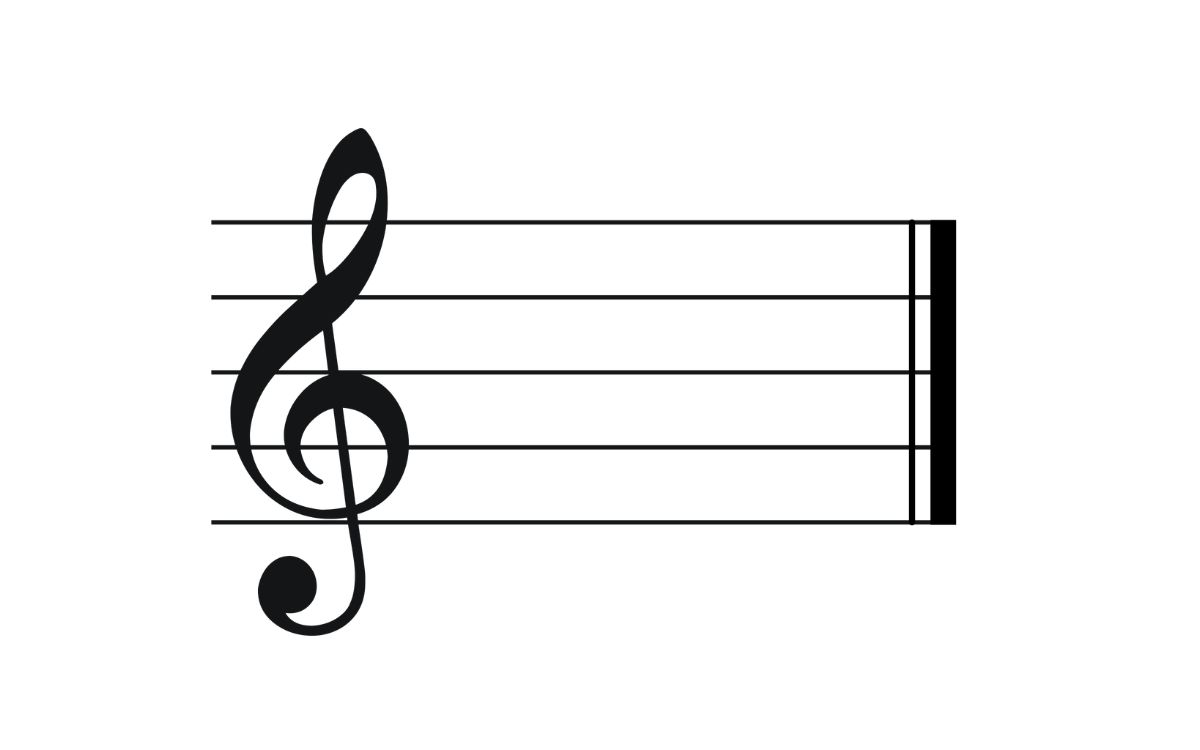Home>Production & Technology>Treble>What Is Bass Clef And Treble Clef
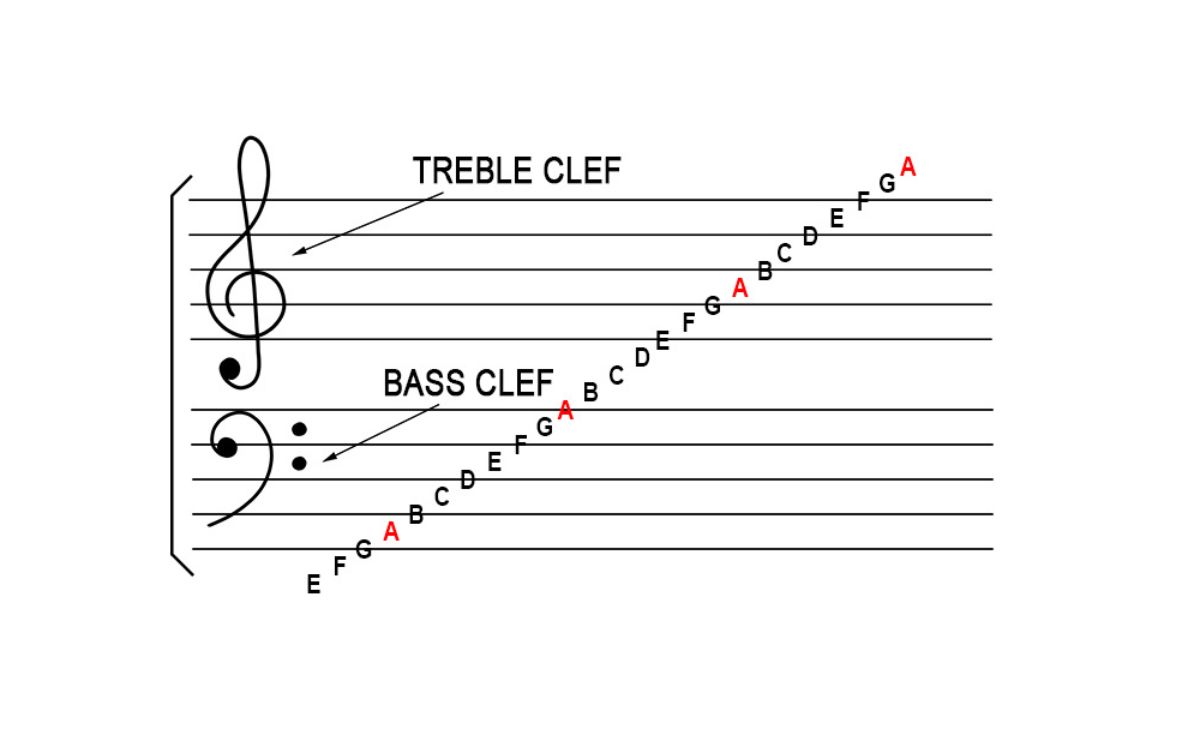

Treble
What Is Bass Clef And Treble Clef
Modified: January 22, 2024
Learn the difference between bass clef and treble clef in music notation. Discover the significance of the treble clef and its role in representing higher-pitched notes.
(Many of the links in this article redirect to a specific reviewed product. Your purchase of these products through affiliate links helps to generate commission for AudioLover.com, at no extra cost. Learn more)
Table of Contents
- Introduction
- What is Bass Clef?
- Origins of the Bass Clef
- Notation and Usage of the Bass Clef
- Common Instruments in Bass Clef
- Importance of the Bass Clef
- What is Treble Clef?
- Origins of the Treble Clef
- Notation and Usage of the Treble Clef
- Common Instruments in Treble Clef
- Importance of the Treble Clef
- Conclusion
Introduction
The world of music is a vast and diverse landscape, with different genres, styles, and instruments that create a symphony of sound. One fundamental aspect of reading and writing music is understanding musical notation. Within this system, there are various symbols and signs used to represent different pitches, durations, and dynamics of musical sounds. One crucial element of musical notation is the use of clefs.
Clefs are symbols placed at the beginning of a musical staff to establish the pitch range of the notes being written or played. They provide a reference point for musicians to read and interpret the written music accurately. Two primary clefs used in music are the bass clef and the treble clef. These clefs play a vital role in identifying and organizing the different voices or parts in a musical composition.
This article will delve into the world of the bass clef and treble clef, exploring their origins, notation, and usage, as well as the instruments commonly associated with each clef. By gaining a deeper understanding of these clefs, you will have a greater appreciation for the intricacies of musical notation and the role they play in creating harmonious melodies.
What is Bass Clef?
The bass clef, also known as the F clef, is a symbol used in musical notation to indicate lower pitches. It is characterized by a stylized letter “F” placed on the musical staff, specifically on the fourth line from the bottom. The bass clef helps determine the pitch range for instruments that produce lower tones, such as bass guitars, cellos, double basses, and the left hand of a piano.
The bass clef was developed to provide a convenient reference point for low pitch notes. It is named the bass clef due to its association with lower voices or bass instruments. The symbol itself resembles an “F” because its origin is derived from the medieval Gregorian chant notation, where this symbol indicated the position of the F note.
In terms of notation, each line and space on the bass clef has a specific note associated with it. The lines of the bass clef, from bottom to top, represent the notes G, B, D, F, and A, while the spaces represent the notes A, C, E, and G. These notes can be modified with additional symbols called accidentals, such as sharps (#) and flats (b), to indicate variations in pitch.
The bass clef is primarily used in music composed for bass instruments and lower male vocal ranges. It provides a clear and concise representation of the lower tones, allowing bass players and vocalists to read music accurately and perform their parts with precision. It also serves as a foundation for harmonies and provides stability to the overall composition.
Learning to read and interpret the bass clef is essential for musicians who play bass instruments or have a lower vocal range. It expands their musical repertoire and enables them to participate in a wider range of musical genres and ensembles. Moreover, understanding the bass clef enhances their ability to contribute to the overall harmony of a musical piece, creating a rich and balanced sound.
Origins of the Bass Clef
The origins of the bass clef can be traced back to the evolution of musical notation throughout history. In ancient music, there was no standardized notation system, and musicians relied on oral transmission and memorization to pass down musical knowledge. However, as music became more complex and diverse, there arose a need for a universal system of notation to accurately document and communicate musical ideas.
During the medieval period, an early form of musical notation known as neumes emerged. Neumes consisted of simple symbols placed above the texts of religious chants, representing the melodic contours and subtle variations of pitch. This early system was limited in notating the specific pitches of notes, but it laid the foundation for the development of more precise notation systems.
By the 11th century, a system of staff lines and clefs began to take shape. However, it wasn’t until the 14th century that the bass clef as we know it today started to emerge. Its early form, called the “C clef,” was used to indicate the position of the note “C” on the staff. Over time, this clef transformed into the bass clef, with the stylized letter “F” indicating the position of the F note on the staff.
The evolution of the bass clef was driven by the need to establish a clear and standardized system for representing the lower registers of musical instruments. As music became more complex and orchestral ensembles grew in size and diversity, having a distinct clef for lower pitches became essential for musicians to read and perform music accurately.
Throughout the centuries, the bass clef became firmly established as the notation system for low-pitched instruments and voices. Its use spread across different musical genres and cultures, ensuring a consistent representation of the lower tones irrespective of the specific musical tradition.
Today, the bass clef stands as a testament to the evolution of musical notation and the human desire to communicate and preserve musical ideas. Its rich history and widespread usage make it a vital component in the world of music, providing a solid foundation for bass instruments and enriching the overall harmonic complexity of musical compositions.
Notation and Usage of the Bass Clef
Notation in the bass clef is based on a five-line staff, with specific notes represented by each line and space. The lines of the bass clef, from bottom to top, represent the notes G, B, D, F, and A. The spaces between the lines represent the notes A, C, E, and G. These notes can be altered with accidentals such as sharps (#) and flats (b) to indicate variations in pitch.
Each pitch in the bass clef is associated with a specific position on the staff, making it easier for bass players and musicians familiar with the bass clef to read and interpret music. The bass clef provides a clear and concise representation of the lower pitches, allowing musicians to understand their part and play it accurately.
The bass clef is predominantly used for bass instruments such as the bass guitar, double bass, tuba, and trombone. It also represents lower vocal ranges, often associated with bass or bass-baritone singers. In ensemble settings, the bass clef acts as the foundation, providing a strong and stable low end that supports the higher-pitched instruments and voices.
When reading sheet music in the bass clef, musicians must be aware of key and time signatures, dynamics, rhythms, and other musical notations that provide additional instructions for the interpretation of the music. These elements, combined with the pitch information provided by the bass clef, give musicians a comprehensive guide to performing their part in an ensemble or solo setting.
The usage of the bass clef extends beyond traditional classical music. It is prevalent in various genres such as jazz, rock, pop, and many others that feature instruments with lower pitches as a prominent element. Being proficient in reading the bass clef opens up a world of musical opportunities, allowing musicians to explore different styles and collaborate with a wider range of artists and ensembles.
Overall, the notation and usage of the bass clef serve as a vital foundation for bass instruments and lower vocal ranges. It enables musicians to accurately read and perform their assigned parts, contributing to the overall harmony and balance of a musical composition. Whether playing in a symphony orchestra, a jazz ensemble, or a rock band, understanding and mastering the bass clef is essential for any musician looking to navigate the world of low-pitched music.
Common Instruments in Bass Clef
The bass clef is primarily associated with instruments that produce low-pitched sounds. These instruments play a crucial role in the rhythm, harmony, and overall foundation of musical compositions. Here are some common instruments that are typically notated in the bass clef:
- Bass Guitar: The bass guitar is a staple in many genres, including rock, jazz, funk, and R&B. It provides the rhythmic and harmonic foundation by playing the lower notes in a band or ensemble. Bass guitarists read and interpret music written in the bass clef to play their assigned parts.
- Double Bass: Often referred to as the contrabass, the double bass is the largest member of the string instrument family. It creates deep, resonant tones and is frequently used in orchestras, jazz ensembles, and chamber music groups. Double bassists rely on the bass clef to read and execute their musical lines accurately.
- Tuba: The tuba is a brass instrument known for its rich and powerful low tones. It is commonly found in symphony orchestras, brass bands, and marching bands. Tubists rely on the bass clef to read their parts and provide the foundation for the brass section.
- Trombone: The trombone is a versatile brass instrument capable of producing a wide range of pitches. It is utilized in various musical genres, including classical, jazz, and marching bands. Trombone players read music in the bass clef, allowing them to play the appropriate notes and contribute to the overall sound of the ensemble.
- Bassoon: The bassoon is a double-reed woodwind instrument with a distinctive deep and rich sound. It is commonly featured in orchestras and chamber music ensembles, adding depth to the woodwind section. Bassoonists read music written in the bass clef, allowing them to perform the bassoon’s melodic and supportive role.
- Euphonium: The euphonium is a brass instrument similar to the tuba, but with a smaller size and higher range. It is used in concert bands, brass bands, and marching bands. Euphonium players read music in the bass clef, providing a warm and resonant sound to the low brass section.
These are just a few examples of the many instruments that utilize the bass clef. Other instruments, such as the cello, baritone horn, and bass clarinet, also read music in the bass clef. Understanding and being proficient in reading the bass clef opens up opportunities to play a wide range of instruments and participate in various musical settings.
Whether you are a beginner learning a new instrument or an experienced musician looking to expand your musical horizons, becoming familiar with the bass clef notation will enhance your musical abilities and enable you to contribute to the rich tapestry of sound in the low-pitched musical world.
Importance of the Bass Clef
The bass clef plays a crucial role in the world of music, providing a foundation for low-pitched instruments and voices. Here are some reasons why the bass clef holds immense importance in the realm of music:
- Defines the Low Frequency Range: The bass clef establishes the lower frequency range in music, allowing for clear and precise representation of low-pitched notes. It provides a reference point for bass instruments, ensuring musicians play in the appropriate range without confusion.
- Creates the Backbone of Harmonies: In many musical compositions, the bass line holds the harmonic structure together. With the help of the bass clef, bass players can accurately read and perform their parts, providing a solid foundation that supports and complements higher-pitched instruments and voices.
- Enhances Rhythm and Groove: The bass clef is essential for creating a strong rhythmic pulse and groove. Bass players, guided by the bass clef, provide the rhythmic foundation that other musicians can latch onto, establishing the tempo and keeping the ensemble unified.
- Enriches Orchestral and Ensemble Settings: In orchestras, bands, and ensembles, the bass clef is essential for maintaining balance and richness in the overall sound. The bass instruments, guided by the notation in the bass clef, contribute deep and powerful tones that add depth and complexity to the ensemble’s performance.
- Facilitates Communication Among Musicians: The bass clef serves as a universal language for bass players and musicians with lower vocal ranges. It allows for seamless communication and understanding among musicians, leading to cohesive performances and effective collaboration.
- Expands Musical Opportunities: Proficiency in reading and interpreting the bass clef opens up a world of musical possibilities. Musicians who are familiar with the bass clef can explore various genres and styles, collaborate with different ensembles, and expand their repertoire to include a wide range of musical compositions.
The importance of the bass clef extends beyond its role in music notation. It is deeply ingrained in the history, tradition, and evolution of music as a whole. By understanding and embracing the bass clef, musicians can unlock new levels of musical expression and contribute to the rich tapestry of sounds in the world of music.
What is Treble Clef?
The treble clef, also known as the G clef, is a symbol used in musical notation to indicate higher pitches. It is recognizable by its curly line and spiral shape that wraps around the second line from the bottom of the musical staff. The treble clef is primarily associated with instruments and voices that produce higher tones, such as the piano’s right hand, violins, flutes, and sopranos.
The treble clef derives its name from the letter “G” because it specifically represents the position of the G note on the staff. The shape of the treble clef evolved over centuries and is believed to have originated from the way the letter “G” was written in medieval musical manuscripts.
In terms of notation, each line and space on the treble clef represents a specific note. The lines, from bottom to top, represent the notes E, G, B, D, and F, while the spaces between the lines represent the notes F, A, C, and E. These notes can be further modified with accidentals such as sharps (#) and flats (b) to indicate variations in pitch.
The treble clef is primarily used in music composed for higher-pitched instruments and female vocal ranges. It provides a clear and concise representation of the higher tones, allowing musicians to read and perform music with accuracy. The treble clef is essential for highlighting the melodies, ornaments, and intricate passages found in a variety of musical compositions.
Learning to read and interpret the treble clef is essential for musicians playing instruments in the higher range or possessing a higher vocal range. It enhances their ability to navigate melodies, harmonies, and intricate musical passages, expanding their repertoire and enabling them to participate in a wide range of musical genres and settings.
Overall, the treble clef plays a vital role in music notation, providing a means to represent and communicate higher pitches. It allows musicians to explore the brilliant and soaring soundscapes found in the upper registers, contributing to the overall richness and complexity of musical compositions.
Origins of the Treble Clef
The origins of the treble clef can be traced back through the rich history of musical notation. The earliest Western musical notations were developed during the medieval period and were limited in their ability to precisely represent specific pitches. However, as music evolved and became more complex, a need arose for a more refined system of notation that could accurately depict the various pitches and tonalities.
During the 11th century, a system of staff lines with clefs started to emerge as a means of representing different pitches. The original treble clef, known as the “C clef” or “Gregorian Clef,” was positioned on the third line from the bottom of the staff. It indicated that the line represented the note “C,” from which the pitch of the other notes could be determined.
Over time, this original C clef gradually transformed into the treble clef that is widely recognized today. The evolution of the treble clef is believed to have been influenced by the evolving styles of musical handwriting during the Renaissance period. The shape of the treble clef developed into a curving line with a loop at the bottom, symbolizing the position of the G note on the staff.
The treble clef owes its name to the prominent position of the G note. The spiral shape of the treble clef symbol is reminiscent of the way the uppercase letter “G” was written in medieval musical notation manuscripts. This association led to the treble clef being referred to as the “G clef.”
Overtime, the treble clef became the standard notation for higher-pitched instruments and voices. It effectively represented the higher frequencies and intricate melodies found in music compositions. The use of the treble clef spread across various music genres and cultures, becoming an essential component of musical notation worldwide.
Today, the treble clef stands as a testament to the ingenuity and evolution of musical notation. Its distinctive shape and positioning on the staff provide a clear reference for musicians to read and interpret music in higher ranges. The treble clef not only preserves centuries of musical tradition but also serves as a universal symbol of the soaring melodies and brilliant harmonies found in countless musical compositions.
Notation and Usage of the Treble Clef
The treble clef, represented by a curved line with a loop, is an essential symbol used in musical notation to indicate higher pitches. It establishes the pitch range for instruments and voices that produce sounds in the upper registers. The treble clef, also known as the G clef, is positioned on the second line from the bottom of the musical staff.
In terms of notation, each line and space on the treble clef corresponds to a specific note. The lines, from bottom to top, represent the notes E, G, B, D, and F. The spaces between the lines represent the notes F, A, C, and E. Additional symbols such as sharps (#) and flats (b) can be used to modify the pitch of these notes as necessary.
The treble clef is predominantly used for instruments with higher pitch ranges, including the violin, flute, trumpet, and right hand of the piano. It is also associated with higher vocal ranges, typically sung by sopranos and altos. By notating music with the treble clef, composers and arrangers ensure that the melodies and harmonies in the higher registers are properly represented.
Notation in the treble clef provides a visual reference for musicians, allowing them to read and perform music accurately. It aids in interpreting complex melodies, ornamentations, and intricate rhythms present in a wide variety of musical genres and styles. Musicians skilled in reading the treble clef can navigate through musical compositions with confidence and precision.
Furthermore, the treble clef is often used in ensemble settings to delineate the melody or main theme of a piece. It serves as a guide for other musicians to align their parts and harmonize accordingly. The treble clef’s live and vibrant qualities make it well-suited for expressive and emotive passages in music.
Proficiency in reading and understanding the treble clef notation opens up opportunities for musicians to participate in various musical ensembles, perform solos, and collaborate with a diverse range of artists. It allows for seamless communication among musicians, as the treble clef transcends language and cultural barriers, providing a standardized means of notation.
In summary, the treble clef holds immense importance in musical notation. It accurately represents higher pitches, guides musicians in interpreting melodies and harmonies, and facilitates collaboration and communication in the realm of music. Mastering the treble clef notation expands the musical horizons of musicians, enabling them to explore and express themselves in the soaring, vibrant melodies of the upper registers.
Common Instruments in Treble Clef
The treble clef, also known as the G clef, is primarily associated with instruments that produce higher-pitched sounds. These instruments play a vital role in melody, harmony, and the expression of musical compositions. Here are some common instruments typically notated in the treble clef:
- Violin: The violin is a popular string instrument played in various genres, including classical, jazz, and folk music. It is notated in the treble clef and is known for its expressive and soaring melodies.
- Flute: The flute is a versatile woodwind instrument capable of producing a wide range of pitches. It is commonly found in classical, jazz, and world music ensembles. Flutists read music in the treble clef and contribute enchanting and fluid melodies.
- Trumpet: The trumpet is a brass instrument known for its clear and bold sound. It is prominently featured in classical orchestras, jazz ensembles, and marching bands. Trumpeters read music in the treble clef and are responsible for delivering powerful and soaring melodies.
- Soprano Voice: The soprano voice is the highest vocal range among female singers. Notated in the treble clef, sopranos contribute breathtaking and ethereal melodies in choral music, opera, and solo performances.
- Piano (Right Hand): The piano is a versatile instrument that encompasses both the treble and bass registers. The right hand of a pianist reads music in the treble clef, playing melodies and harmonies in the higher range of the instrument.
- Clarinet: The clarinet is a woodwind instrument with a distinctive sound. It is used in various musical genres such as classical, jazz, and marching bands. Clarinetists read music in the treble clef and contribute melodic lines with their versatile instrument.
These are just a few examples of the many instruments frequently notated in the treble clef. Other instruments, such as the oboe, saxophone, and voice ranges like mezzo-soprano and alto, also utilize the treble clef. Becoming proficient in reading the treble clef notation allows musicians to explore a wide range of musical genres and collaborate with diverse ensembles and fellow musicians.
Whether you are an aspiring musician or a seasoned performer, understanding the treble clef notation opens doors to a world of musical possibilities. It enables musicians to express themselves through vibrant and soaring melodies, adding depth, emotion, and beauty to the overall musical experience.
Importance of the Treble Clef
The treble clef, also known as the G clef, holds significant importance in the realm of music. It plays a crucial role in representing higher-pitched instruments and voices, contributing to the overall harmony, melody, and expression of musical compositions. Here are key reasons why the treble clef is of immense importance:
- High-Pitched Instrumentation: The treble clef is essential for notating instruments that produce higher-pitched sounds, such as the violin, flute, and trumpet. These instruments often carry the melodic structure of a piece, and the treble clef notation allows musicians to accurately read and perform the intricate and expressive melodies they produce.
- Vocal Representation: The treble clef is crucial for representing higher vocal ranges, particularly sopranos in choral performances and opera. It enables vocalists to navigate and interpret the melodies and harmonies written specifically for their higher registers, resulting in captivating and emotive vocal performances.
- Expressive Melodies: Many melodies in music span across the higher registers, capturing moods and emotions with their soaring and lyrical qualities. The treble clef notation provides a visual representation of these melodies, guiding musicians to bring out their expressive nuances and dynamics.
- Ensemble Balance: In ensemble settings, using the treble clef helps maintain a balanced and cohesive sound. By notating higher-pitched instruments in this clef, composers and arrangers ensure that the melodies and harmonies are well-distributed across the musical texture, allowing for an equal contribution from each instrument.
- Transcription and Arrangement: The treble clef is also crucial for transcribing and arranging music. By transcribing melodies originally written for one instrument into the treble clef, musicians can adapt and explore new possibilities for performance. It allows for versatility and creativity in rearranging music for different instruments and ensembles.
- Musical Communication: The treble clef serves as a universal language for musicians, transcending linguistic barriers. Musicians proficient in reading treble clef notation can easily communicate and collaborate with others, whether it be in a choir, orchestra, band, or other ensemble settings.
The treble clef represents the higher register of music, catering to the intricate melodies and expressive qualities that captivate listeners. Mastery of reading and interpreting the treble clef opens up a world of musical possibilities, allowing musicians to explore a vast repertoire of genres, styles, and musical expressions.
Ultimately, the importance of the treble clef lies in its ability to accurately represent and convey the soaring melodies, captivating harmonies, and emotional depth found in music. It allows musicians to connect with both their own creative expression and the audience, creating a truly immersive and engaging musical experience.
Conclusion
The bass clef and treble clef are fundamental components of musical notation, each serving a unique purpose in representing different pitch ranges. The bass clef, with its distinct “F” symbol, handles lower pitches, while the treble clef, represented by a curving line with a loop, encompasses higher tones. Understanding and mastering these clefs is essential for musicians to navigate and interpret written music accurately.
Both the bass clef and treble clef possess rich histories, evolving over time to meet the needs of musicians and composers. They provide a standardized means of notation, facilitating communication, collaboration, and interpretation of music across genres and cultures. Through centuries of musical tradition, these clefs have become integral to the fabric of music, guiding musicians in their performances and enriching the overall harmonies and melodies.
The bass clef establishes the foundation and depth, with its low-register instruments and voices adding stability and richness to musical arrangements. Meanwhile, the treble clef brings out the soaring melodies, expressive nuances, and high-pitched instruments and voices that capture our attention and evoke emotions.
From the resonating tones of the double bass and the rhythmic drive of the bass guitar to the enchanting melodies of the violin and the ethereal soprano voices, these clefs play crucial roles in various ensembles and musical genres. They provide a roadmap for musicians to follow, ensuring a harmonious collaboration and delivering captivating performances.
Whether you are a listener, a beginner musician seeking to learn an instrument, or an experienced performer exploring new musical territories, understanding and appreciating the bass clef and treble clef will deepen your understanding and connection to music. These clefs form the backbone of musical notation, guiding musicians in their creations and interpretations, and ultimately enhancing our collective musical experiences.
So, whether you find yourself entranced by the rich depths of the bass clef or captivated by the soaring melodies of the treble clef, both have their place in the symphony of music, harmonizing together to create a beautiful and diverse world of sound.

